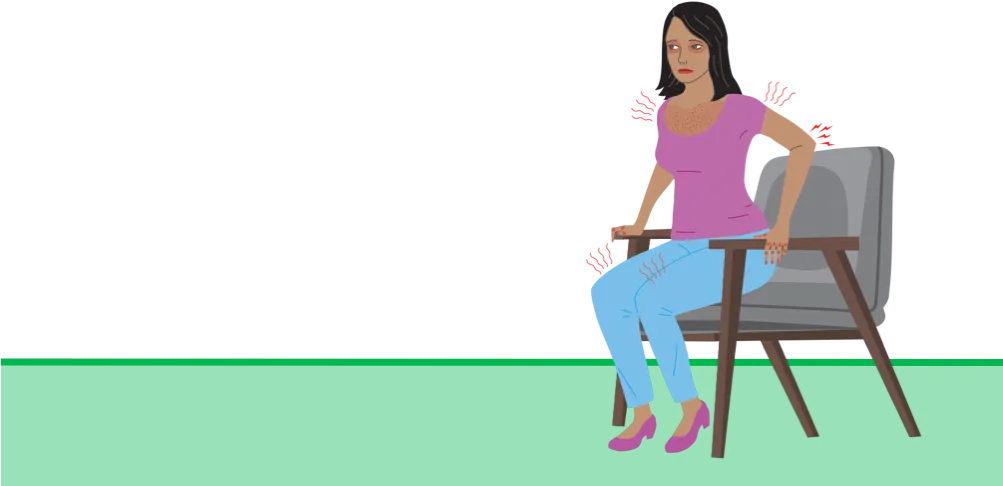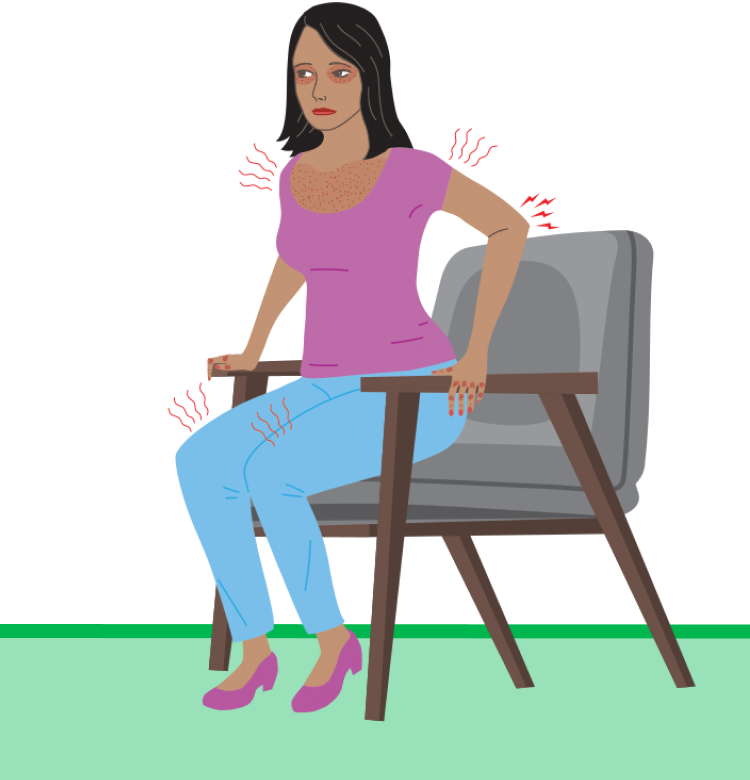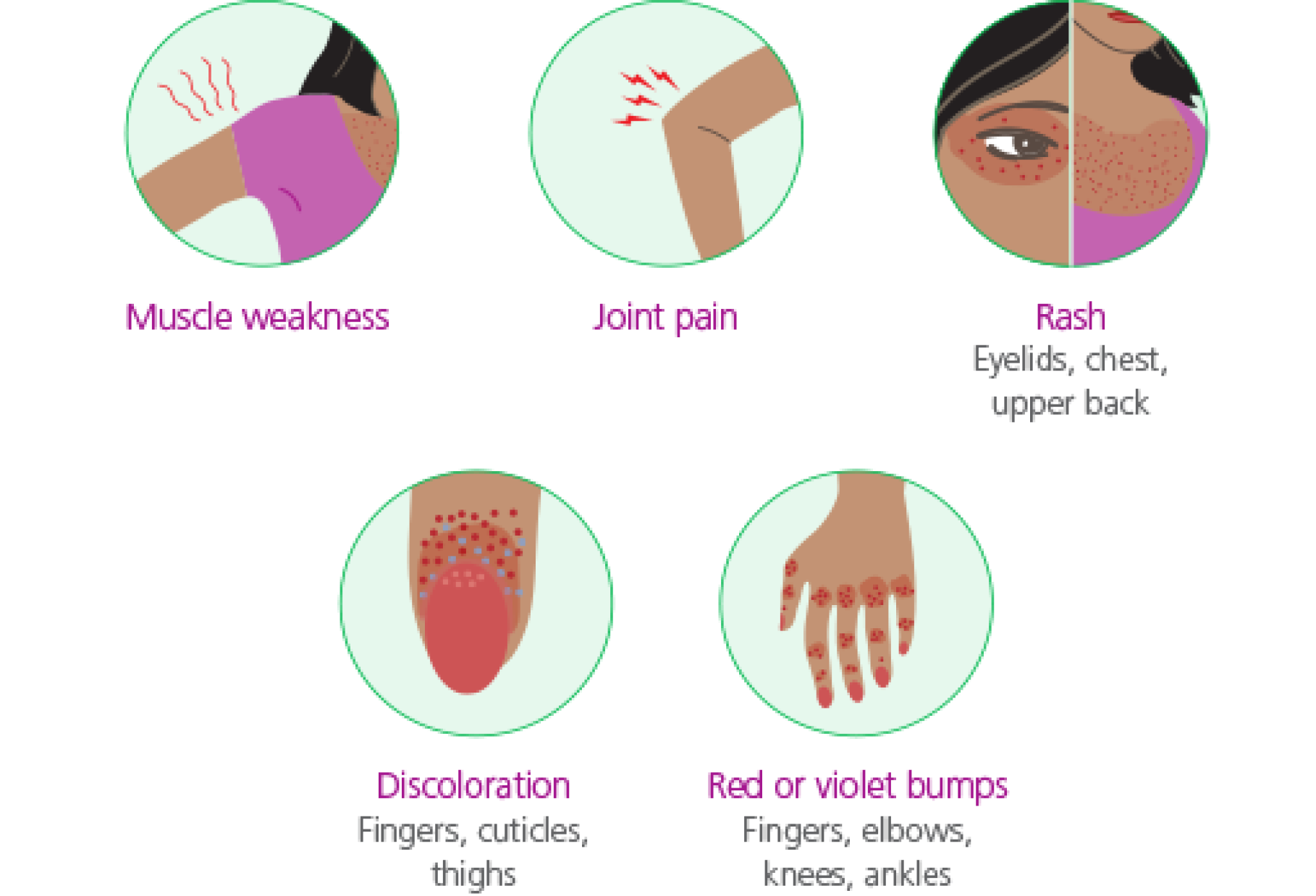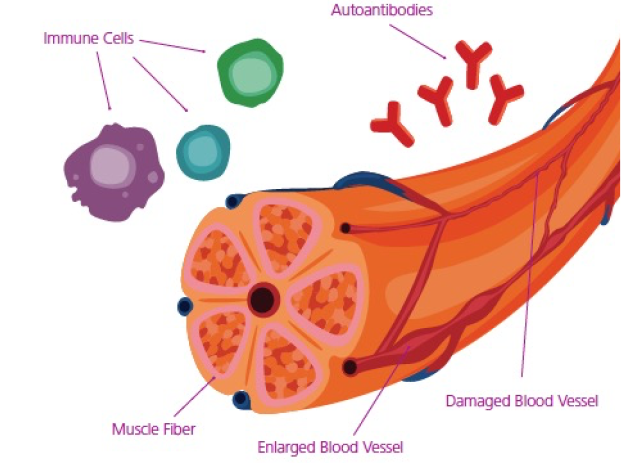


Dermatomyositis (dur-muh-toe-my-uh-SY-tis) is a rare autoimmune disorder that causes rash, joint pain, and muscle weakness. You may hear DM called by a more general name that refers to a group of disorders that cause muscle weakness: idiopathic inflammatory myopathy.
Symptoms can vary from person to person and can appear in different areas of the body. They may appear slowly, or all at once. Sometimes your symptoms can disappear for a while, then return.
DM most often occurs in adults in their late 40s to 60s.

DM may cause skin and joint problems, as well as permanent
damage to muscles. It is important to speak with your
healthcare professional about treatment.

There are certain cells in the body called immune cells that fight off infection and disease. When a person has DM, some of the body’s immune cells may release antibodies, which can attack the healthy blood vessels that supply blood to your muscles. This action may produce inflammation and cause DM.

There is no cure for DM, but your healthcare team can prescribe treatments to manage your symptoms. These may include:
Because of the range of symptoms you might be experiencing, your care team may include specialists like neurologists, rheumatologists, dermatologists, pharmacists, and nurses, among others.


Collapse
OCTAGAM 10% is indicated for the treatment of chronic immune thrombocytopenic purpura (cITP) in adults and dermatomyositis (DM) in adults. For patients with cITP, it is used to rapidly increase the platelet count in the blood to help control or prevent bleeding. For patients with DM, it helps improve muscle function and skin rash.
OCTAGAM 10% is a liquid medication that contains Immunoglobulin G (IgG). OCTAGAM 10% is made from human plasma donated by healthy people. OCTAGAM 10% is given through the vein (intravenously) in a hospital, infusion center, or at home.
Common side effects include headache, fever, nausea, vomiting, increased blood pressure, chills, musculoskeletal pain, dyspnea, infusion site reactions, and increased heart rate.
If you use a blood glucose monitor, check with your HCP to ensure that your monitor and test strips are acceptable to use while you are receiving OCTAGAM 10%.
These are not all of the possible side effects with OCTAGAM 10%. Tell your HCPs about any side effects that you have that cause concern or don't go away.
Please click here for Full Prescribing Information, including complete BOXED WARNING.
Patients should always ask their doctors for medical advice about adverse events.
You may report an adverse event related to Pfizer products by calling 1-800-438-1985 (US only). If you prefer, you may contact the US Food and Drug Administration (FDA) directly. The FDA has established a reporting service known as MedWatch where healthcare professionals and consumers can report problems they suspect may be associated with the drugs and medical devices they prescribe, dispense, or use. Visit www.fda.gov/MedWatch or call 1-800-FDA-1088.
OCTAGAM® is a registered trademark of Octapharma AG.
This site is intended only for U.S. residents. The products discussed in this site may have different product labeling in different countries. The information provided is for educational purposes only and is not intended to replace discussions with a healthcare provider.
Pfizer
PO Box 29309
Mission, KS 66201
Manufactured by Octapharma Pharmazeutika Produktionsges m.b.H.
Distributed by
Octapharma USA Inc.
PP-OTG-USA-0269-01
© 2023 Pfizer Inc.
December 2023


Expand
OCTAGAM 10% is indicated for the treatment of chronic immune thrombocytopenic purpura (cITP) in adults and dermatomyositis
(DM) in adults. For patients with cITP, it is used to rapidly increase the platelet count in the blood to
help control or prevent bleeding. For patients with DM, it helps improve muscle function and skin rash.
OCTAGAM 10% is a liquid medication that contains Immunoglobulin G (IgG). OCTAGAM 10% is made from human plasma donated by healthy people. OCTAGAM 10% is given through the vein (intravenously) in a hospital, infusion center, or at home.